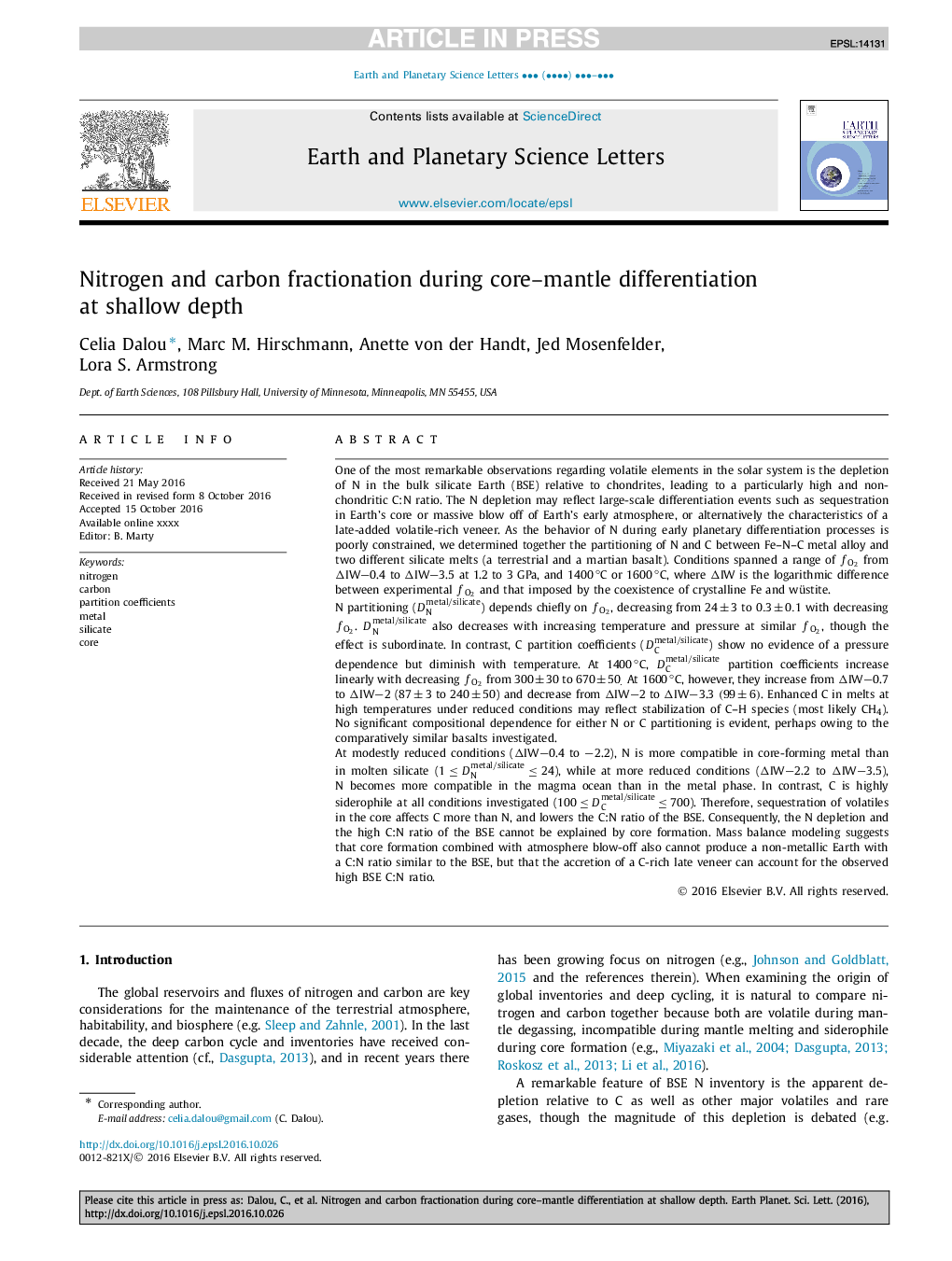| Article ID | Journal | Published Year | Pages | File Type |
|---|---|---|---|---|
| 5780009 | Earth and Planetary Science Letters | 2017 | 11 Pages |
Abstract
At modestly reduced conditions (ÎIWâ0.4 to â2.2), N is more compatible in core-forming metal than in molten silicate (1â¤DNmetal/silicateâ¤24), while at more reduced conditions (ÎIWâ2.2 to ÎIWâ3.5), N becomes more compatible in the magma ocean than in the metal phase. In contrast, C is highly siderophile at all conditions investigated (100â¤DCmetal/silicateâ¤700). Therefore, sequestration of volatiles in the core affects C more than N, and lowers the C:N ratio of the BSE. Consequently, the N depletion and the high C:N ratio of the BSE cannot be explained by core formation. Mass balance modeling suggests that core formation combined with atmosphere blow-off also cannot produce a non-metallic Earth with a C:N ratio similar to the BSE, but that the accretion of a C-rich late veneer can account for the observed high BSE C:N ratio.
Related Topics
Physical Sciences and Engineering
Earth and Planetary Sciences
Earth and Planetary Sciences (General)
Authors
Celia Dalou, Marc M. Hirschmann, Anette von der Handt, Jed Mosenfelder, Lora S. Armstrong,
